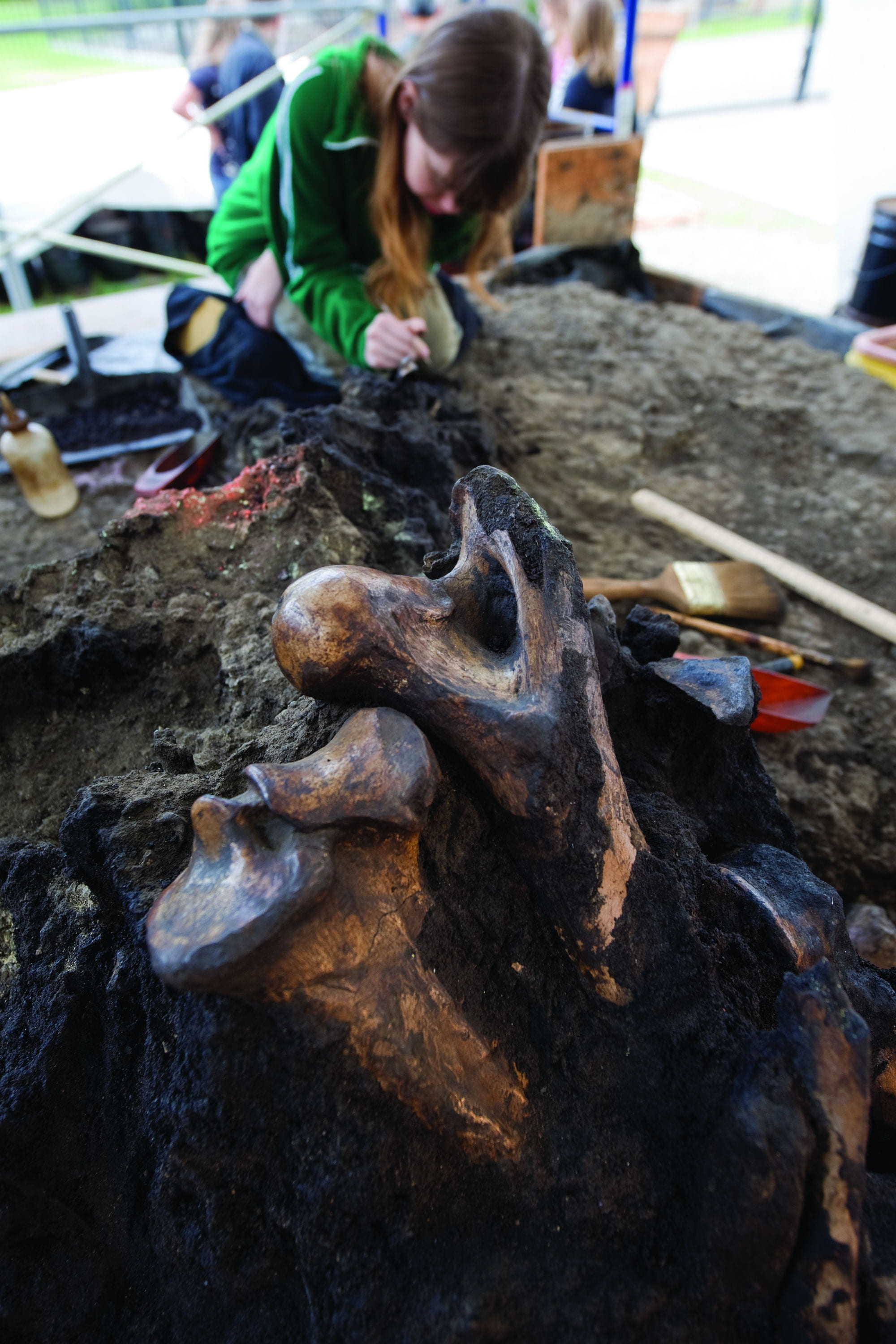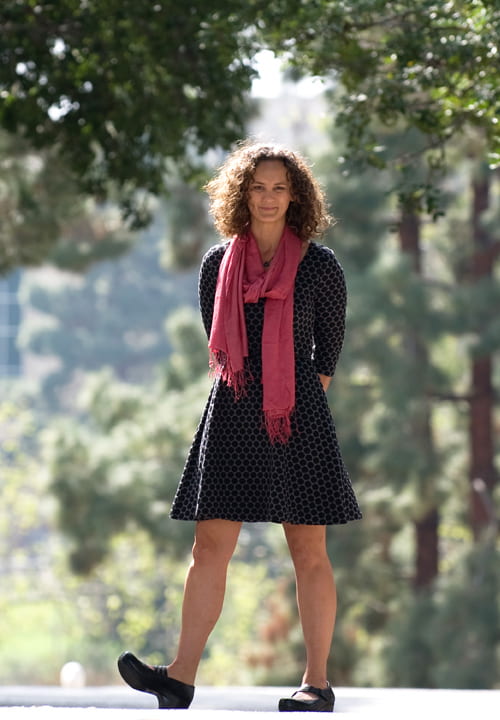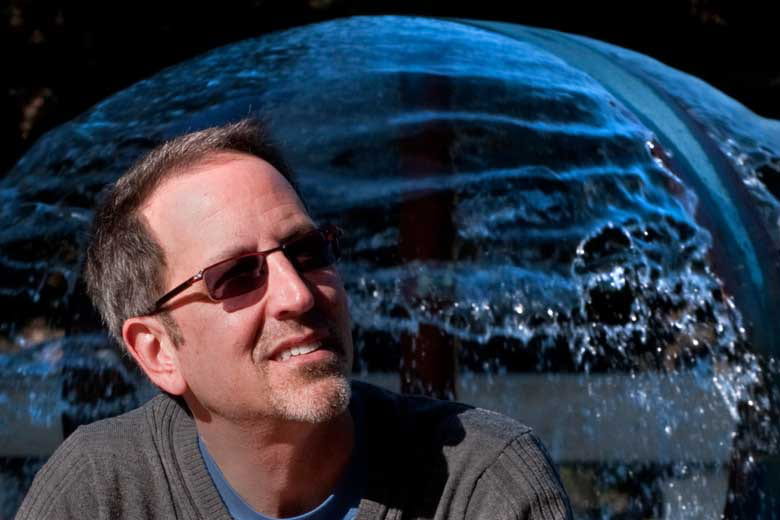Time travelers
Scientists use radiocarbon dating to analyze everything from the world’s oldest shoe to sediment samples that shed light on global climate change

Benjamin Fuller, an assistant project scientist in UC Irvine’s Earth system science department, has a stash of rare wines that many connoisseurs would envy, such as the $2,300 1961 Chateau Latour that Wine Advocate describes as “liquid perfection.” Alas, the fine vintage is not for tasting but for testing. Like the Sherlock Holmes of vino, Fuller investigates whether the bottles indeed contain the fruit of very good years — or a cheap replacement.
Dating fine wine is one of the more unusual projects underway at UC Irvine’s W.M. Keck Carbon Cycle Accelerator Mass Spectrometry Laboratory, where scientists use radiocarbon technology to estimate the age of organic material.
“It’s the only AMS lab in the world devoted to studying the carbon cycle [the path that carbon follows in the environment],” says Ellen Druffel, Fred Kavli Chair and professor of Earth system science and the lab’s co-founder. “We can accurately measure the levels of carbon-14 in anything that lived within the last 50,000 years. We can assign ages to great animals that roamed the Americas during the last ice age. It’s an extremely powerful method employed in scores of fields of science, engineering and the humanities.”
UC Irvine researchers use the lab primarily to advance the understanding of global climate change. While they’ve tested wine on occasion, they’re more likely to study soil, lake and ocean sediment, stalagmites (rock formations in caves) and coral reefs.
“High-precision carbon-14 measurements are made for scientists working in every carbon pool on Earth,” Druffel says, “from atmospheric CO2 at Barrow, Alaska, to foram shells from Antarctic Ocean sediment, to earthquake-disturbed soil on the San Andreas fault, to black carbon in the deep Pacific.”
Circle of life
Carbon-14 is a radioactive isotope formed in the atmosphere by cosmic rays and absorbed by plants, animals and all other living things. When these organisms die, the radiocarbon begins to slowly dissipate; scientists can estimate a specimen’s age by measuring what’s left.
“The whole biosphere is labeled with carbon-14,” says John Southon, Earth system science researcher and Keck lab co-founder who manages the facility. “It circulates in the ocean from top to bottom. Think of it as a red dye for the carbon cycle. How red it is tells how quickly things turn over.”
His work focuses on the mysterious rise in carbon dioxide that occurred in the atmosphere between 18,000 and 11,000 years ago, as the planet emerged from the last glacial period.
“We’re trying to find out where the excess CO2 came from, because if we can’t explain it, that means our climate models are flawed,” Southon says. He’s checking core samples from the ocean floor to see if the carbon was somehow trapped in the deep sea before being released back out into the atmosphere.
“This will improve our overall understanding of global climate change,” he says.
“That’s the grand, overarching theme of our research.”
Real-world applications
While advancing knowledge of the carbon cycle, the lab pursues side projects, such as determining the age of a mammoth and other fossils pulled from the La Brea Tar Pits (see related story).
“Every week we get something interesting in here,” Fuller says. “This is one of the coolest labs anywhere.”
He and Earth system science researcher Simon Fahrni (now at the Swiss Federal Institute of Technology) developed a method for extracting gas from wine bottles without uncorking them, making radiocarbon testing palatable to private collectors and others hoping to prove the pedigree of an expensive wine. So far, they’ve examined 35 bottles — without sacrificing a drop.
Archeologists, geographers and curators are among those who’ve sought the lab’s help in probing the past. They pay a testing fee that varies according to the material and whether the submitter is affiliated with the University of California.
“There are a lot of things made of carbon, so radiocarbon dating has wide applications. By its very nature, you dabble in all of this interesting stuff,” Southon says.
“It’s one of the joys of technique-based science.”
A few years ago, the lab tested samples from the world’s oldest leather shoe, discovered by archeologists at the entrance to an Armenian cave where vintners made wine during the Copper Age. The researchers concluded that the shoe is 5,500 years old, duplicating results at the University of Oxford.
Conservators at the J. Paul Getty Museum have called on the lab to analyze their collection of Romano-Egyptian mummy paintings, lifelike portraits on wood or linen placed over corpses’ faces. Most dated to 100 A.D. to 200 A.D. “One or two were a century older than they should have been,” Southon says. “It indicated [the artists] were reusing material” from an earlier period.
Religious artifacts such as the Shroud of Turin, however, are off-limits, he says: “We don’t get involved, because you have a lot of well-meaning people with strong beliefs who spend an inordinate amount of time trying to discredit radiocarbon dating.”
Peering into the past
Discovered in the 1940s, radiocarbon dating techniques can be used on material that’s less than 50,000 years old; too little carbon-14 remains in older material to yield a reliable measurement. Accuracy rates depend on the sample’s age.
“If you have a 10,000-year-old specimen, you can get it within a few decades. If it’s 40,000 years old, there might be a 1,000-year [accuracy] range,” Southon says.
The technology also has proven unreliable at dating most material that’s been around since the mid-1600s, due to changes in the amount of radiocarbon being produced in the Earth’s atmosphere by incoming cosmic rays.
Still, Southon and his colleagues can pinpoint the age of a mid-20th century specimen such as wine with far more precision because of an anomaly: Nuclear weapons testing doubled the amount of radiocarbon in the atmosphere, and the spike in carbon-14 shows up in samples.
“You can date things almost to the exact year between the late 1950s and the 1990s, thanks to the bomb curve,” he says.
High-tech time machine
A bearded, self-described refugee from nuclear physics, Southon worked at the only other AMS facility in California — at Lawrence Livermore National Laboratory — before joining UC Irvine, arriving in 2002, the same year the instrument did.
He, Druffel and Susan Trumbore (now director of Germany’s Max Planck Institute for Biogeochemistry) received a
$2 million grant from the W.M. Keck Foundation to develop the lab. Today there are a dozen AMS centers nationwide, Southon says, with six conducting biomedical research and the rest engaged in Earth science and archeological studies.
“That’s the gadget,” he says, gesturing to an elaborate C-shaped instrument that takes up half the lab in Croul Hall.
Before scientists can insert samples into the spectrometer, they clean them of soil, water, tar and other material using chemicals and filters, then convert them into graphite – the same soft substance used in pencils — which contains carbon and gives the best results.
“You can’t just put in a piece of shell or wood and get precise numbers out of it,” Southon says. “A lot of what we measure is dirty. The samples have been in the ground or in ocean sediment or wherever. So we clean them up.
We want to quantify the carbon that was there originally.”
He holds up a test tube containing just a pinch of bone fragments from the La Brea Tar Pits that have been turned into “fluffy white collagen.” The entire contents, which will be converted into graphite, could be airborne with one good sneeze.
The spectrometer features a particle accelerator, large magnets, and detectors to break up molecules in the sample and separate out the carbon-14. “We measure how much is left,” Southon says.
At Lawrence Livermore, he analyzed fake $100 bills from the 1990s for the U.S. Secret Service to determine whether they originated from the same massive counterfeiting operation. Southon dated the currency to different years, indicating that it came from multiple sources.
As part of his recent climate research, he tracks the location of volcanic eruptions that occurred thousands of years ago.
“You go out into the field and look for a tree or plant that died because of the eruption,” Southon says. He’s currently testing samples of charred material from possible sites (mainly in El Salvador) of a massive eruption known to have occurred in 535 A.D., based on records from the distant Byzantine Empire that describe a dark sky at noon.
“We want to know where the heck it was. It’s a big deal because volcanic eruptions have an effect on climate. It helps us understand atmospheric models,” Southon says. “It’s a lot easier to predict what can happen in the future if you have this record of the past.”
Originally published in the Spring 2014 issue of UCI Magazine

